
From the Deputy Assistant Secretary

Happy February, everyone. This month, we are celebrating the two-year anniversary of this newsletter. I remember clearly, two years ago, when we rolled out the newsletter. I was in the middle of announcing the launch of the newsletter at the National Association of ESEA State Program Administrators (NAESPA) gathering and a member in the audience informed us all that they had just received it. It was a perfect coincidence – either that or my team was reading my mind!
This newsletter had been a priority of mine since I arrived in OESE. I wanted to communicate to external stakeholders what we do here in OESE, as well as share the important resources developed by my staff, our partners, and grantees. This is no small undertaking, so I want to thank the staff who spend countless hours designing the themes, collecting the resources, and publishing this monthly newsletter. We are already planning our content for March, April, and beyond. As always, please let us know if you have feedback by emailing OESENewsletter@ed.gov, and please continue to share it with other potential subscribers! You can also find archived issues on this website.
This month, our theme is supporting learning through the use of relief funds and the Office of State and Grantee Relations’ (SGR) administration of emergency relief funds. This newsletter offers an opportunity to get to know SGR and their new director. It also includes resources on how to use relief funds to address teacher and school staff shortages and how to address the pandemic’s impact on students and provides a Maintenance of Equity Tool. We continue to highlight the most up-to-date resources from the Centers for Disease Control and Prevention (CDC) as well.
Also, note that in a recent major address at the Department, U.S. Secretary of Education Miguel Cardona laid out his vision for continued recovery through the pandemic and his priorities for broader investments in America’s education system to ensure that all students can succeed and thrive.
I hope to see some of you at the NAESPA meeting! The Department is presenting some great sessions, and we are excited to have this opportunity.
Ruth Ryder
|

Featured Office: State and Grantee Relations
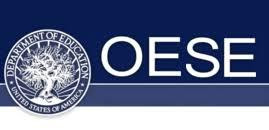
The Office of State and Grantee Relations (SGR) administers several of the programs authorized under the Education Stabilization Fund, including the Coronavirus Aid, Relief, and Economic Security Act (CARES); the Coronavirus Response and Relief Supplemental Appropriations Act (CRRSA); and the American Rescue Plan (ARP). This represents an investment of over $263 billion into state and institutional COVID-19 recovery and rebuilding efforts to prevent, prepare for, and respond to COVID-19’s impacts on education for our nation’s students. SGR is the main point of contact for states as they administer three emergency relief funds: (1) the Elementary and Secondary School Emergency Relief (ESSER) Fund, (2) the Governor’s Emergency Education Relief (GEER) Fund, and (3) the Emergency Assistance to Non-public Schools (EANS) Fund.
Information about the programs the SGR administers can be found on this website.
|
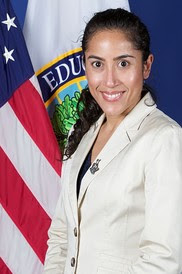
Meet Department Staff Member Laura Jimenez
Learn more about Laura Jimenez, director of the Office of State and Grantee Relations. She comes to the Department with more than 20 years in education, most recently having served as the director of standards and accountability at the Center for American Progress. Her work there focused on advancing policies that would improve the quality of all K-12 public schools.
How long have you been at the Department?
- I started back at the U.S. Department of Education in December 2021, after having been at the Department from 2010 to 2014.
What do you most enjoy about working at the Department?
- The amazing staff at the Department are incredible experts and colleagues and the best part about working at ED!
What is one thing you’d like to see happen for SGR’s work in the next year?
- Continue to grow our team so that we can provide the best service possible to grantees.
|

Department Moving Away from DUNS Numbers
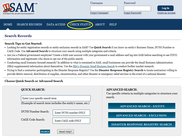
On April 4, the Department will join other federal agencies and transition to using Unique Entity Identifiers (UEIs) for grant recipients and applicant organizations, rather than DUNS numbers. UEI is administered through SAM.gov (System for Award Management).
Organizations that have already registered a DUNS with SAM.gov have now been assigned a UEI in that system.
Entities that do not have a registered DUNS in SAM.gov should ensure that they are registered well before the switch takes place. Organizations should initiate the process with SAM.gov no later than March 1, as it may take some time for registration to be completed.
For detailed information about this change, please refer to the fact sheet found here: UEI Transition Fact Sheet.
|
Centers for Disease Control and Prevention Updates
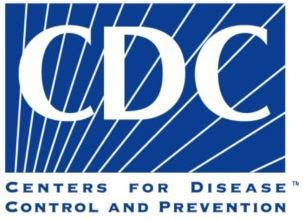
Fact Sheet: Biden-Harris Administration Increases COVID-19 Testing in Schools to Keep Students Safe and Schools Open
The White House released a fact sheet discussing the administration’s commitments to increase COVID-19 testing in schools to keep students safe and schools open.
2022: Staying in School In-Person & Updated CDC Guidance
The Department recently released guidance titled 2022: Staying In School In-Person. This document discusses four important strategies to keep students and staff safe, healthy, and ready for in-person learning. The strategies are to help students get vaccinated, implement test-to-stay practices and provide screening testing, collaborate with local health departments, and monitor community spread. Also of note, the Centers for Disease Control and Prevention (CDC) has updated its guidance on quarantine and isolation.
Information and Vaccination Location Tool for Elementary School Children
The CDC has officially recommended that children 5 to 11 years old be vaccinated against COVID-19 with the Pfizer-BioNtech pediatric vaccine. Click here for facts on COVID-19 vaccines for children and teens and to locate a Pfizer vaccine for children ages 5-11. To learn more about getting vaccinated or standing up a vaccine clinic for your school or community, visit www.vaccines.gov.
|
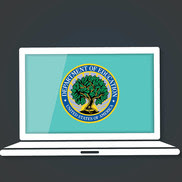
What to Do If a Child Becomes Sick or Receives a New COVID-19 Diagnosis at Your Child Care Program & COVID-19 Data Dashboard
The CDC updated this flowchart to inform school staff and child care programs on what to do if a child becomes sick or receives a new COVID-19 diagnosis while in school. Additionally, the Department of Education, in collaboration with the CDC, launched a COVID-19 data dashboard to help the public keep track of the impact of COVID-19 on K-12 schools. Data will be updated each week. Where possible, the information is presented geographically so that educators and families can understand the impact of COVID in their communities.
CDC Isolation and Quarantine Guidance
This updated guidance by the CDC recommends shortening the recommended time for isolation for individuals who may have been exposed to COVID-19 and its variants.
|

Technical Assistance Resources: Supporting Learning through the use of Relief Funds

ARP ESSER State Plans Update
As of late 2021, the Department has approved all 52 American Rescue Plan Elementary and Secondary School Emergency Relief (ARP ESSER) state plans. These plans reflect states’ commitment to ensuring that funds are meeting the needs of students during the COVID-19 pandemic, particularly by keeping schools safe and open and by addressing the impact of lost instructional time. States are using funds to invest in evidence-based practices designed to expand equity, to accelerate instruction, and to provide critical mental health and social-emotional resources. The Department will continue to work with states to make sure that students, particularly those students most impacted by the pandemic, are reengaged and supported in the years to come.
For more information, please visit the state plans website, which includes a highlights document for each state ARP ESSER plan approved by the Department.
|
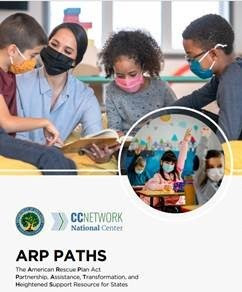
The American Rescue Plan Act Partnership, Assistance, Transformation, and Heightened Support Resource for States
The Department and the National Comprehensive Center recently published the American Rescue Plan Act Partnership, Assistance, Transformation, and Heightened Support (ARP PATHS) Resource for States to help states share their progress as they deploy $122 billion in American Rescue Plan Elementary and Secondary School Emergency Relief (ARP ESSER) funds. This tool invites states to describe the strategies they are implementing that could serve as promising practices for other states and the nation in ensuring that ARP ESSER funds are used appropriately and effectively as intended by the law to support safe in-person instruction; address the effects of lost instructional time due to COVID-19; and meet the social, emotional, mental health, and academic needs of students. Read the Department’s press release on this website.
|

American Rescue Plan Funds and Other Federal Supports to Address State and Local Teacher & School Staff Labor Shortages
On Oct. 27 and 28, 2021, the U.S. Departments of Education and the Treasury offered two presentations on using American Rescue Plan funds:
During the presentations, the following resources were provided:
|

Dear Colleague Letter from Secretary Cardona
In a recent
![]()
About the Author
Ruth Ryder is the Deputy Assistant Secretary for the Office of Office of State Grant and Program Support in the Office of Elementary and Secondary Education (OESE) at the U.S. Department of Education. In this role, Ms. Ryder oversees a broad range of management, policy, and program functions related to formula and discretionary grant programs under the Elementary and Secondary Education Act, as amended by the Every Student Succeeds Act (ESEA). Ms. Ryder was previously the deputy director of the Office of Special Education Programs in the Office of Special Education and Rehabilitative Services, which she joined in 1988. Prior to joining the Department, Ms. Ryder was a program administrator in a Washington state school district. There she had responsibility for the Elementary and Secondary Education Act Title 1 and Title II programs, state-remediation, gifted education, outcome-based education, and state- and district-wide testing programs. Ms. Ryder has a bachelor’s degree in psychology and elementary education and a master’s degree in special education.
Read next
News From Others
Stakeholder Groups Urge Caution Regarding AI Use
Legislation
House Subcommittee Moves FY 2026 Labor-HHS-ED Bill Forward
USED & White House
DOJ Releases Guidance on DEI
| | |

